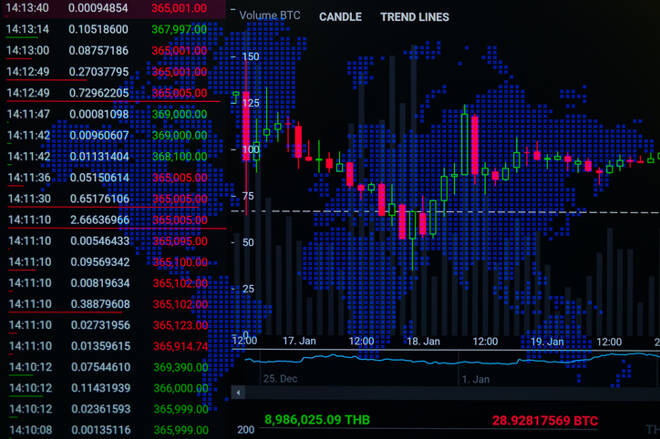Most Asian stocks are trading in positive territory, perhaps taking cues from its US counterparts which rebounded from its sharpest drop in four months. Most Asian currencies are also seeing slight gains against the Greenback. Gold is moderating slightly below the psychological $1,300 mark, while USDJPY has bounced off the 109 level to trade around 109.6 at the time of writing.
Advertisement
Advertisement
Risk Appetite Creeping Back Into Markets Amid Persistent US-China Trade Uncertainties
By:
The early Wednesday movements in Asia suggest that investors are tepidly putting some risk back on the table, even as uncertainties surrounding US-China trade tensions continue to cast a cloud over market sentiments.
Greenback steady even as Trump repeats call for lower US interest rates to “match” China stimulus
US President Donald Trump has once again called on the Federal Reserve to lower interest rates, in a bid to “match” stimulus measures in China. He described such a move by the US central bank as “game over”, and that the US will win in its trade conflict with China.
Amid such repeated calls by Trump for US interest rates to be lowered, the Dollar index is holding around the 97.5 marks at the time of writing, even though the Fed funds futures now point to more than a 70 percent chance of an interest rate cut by December. Markets are casting an eye over the potential ramifications of heightened trade tariffs on the US inflation and growth outlook, which may ultimately tip the balance in favour of a Fed rate cut before 2019 is over.
US retail sales, industrial production data may serve as near-term Dollar catalysts
The US Dollar may be bolstered in the near-term, should the US retail sales and industrial production data due later Wednesday come in better-than-expected. The Greenback’s upward trajectory in 2019 is likely to remain intact as long as the US economy continues to be in a “good place”, an oft-used refrain by Fed officials. Broader concerns over the ramp-up in US-China trade tensions should also support the US Dollar, as it offers investors refuge during periods of uncertainty.
Although growth momentum in the world’s largest economy is expected to moderate over the course of the year, especially once the new trade tariffs take hold on the real economy, the US is still set to perform better than its peers in the developed world, underpinning the base case for a resilient US Dollar moving forward.
Bank Indonesia policy guidance in focus amid Rupiah weakness, growing external downside risks
Bank Indonesia’s Board of Governor meeting begins today, as investors wait to see if policymakers will deploy some of its 175 basis points in hikes from 2018 to support the Indonesian Rupiah, which has weakened by some 1.4 percent against the US Dollar so far this month. USDIDR has been opening a path towards the 14,500 level, with the Rupiah having wiped out most of its year-to-date gains against the Greenback.
Noting the Rupiah’s recent weakness, coupled with growing eternal headwinds in light of heightened US-China trade tensions, it remains to be seen whether Bank Indonesia’s policy decisions may eventually fall in line with the regional policy trend. This is especially given that the central banks in the Philippines, Malaysia, and New Zealand each lowered their respective benchmark interest rates last week.
Disclaimer: The content in this article comprises personal opinions and should not be construed as containing personal and/or other investment advice and/or an offer of and/or solicitation for any transactions in financial instruments and/or a guarantee and/or prediction of future performance. ForexTime (FXTM), its affiliates, agents, directors, officers or employees do not guarantee the accuracy, validity, timeliness or completeness, of any information or data made available and assume no liability as to any loss arising from any investment based on the same.
About the Author
Han Tancontributor
A highly experienced financial journalist and producer with more than seven years of experience gained across some of Southeast Asia’s (SEA) most prominent business broadcasters.
Advertisement
